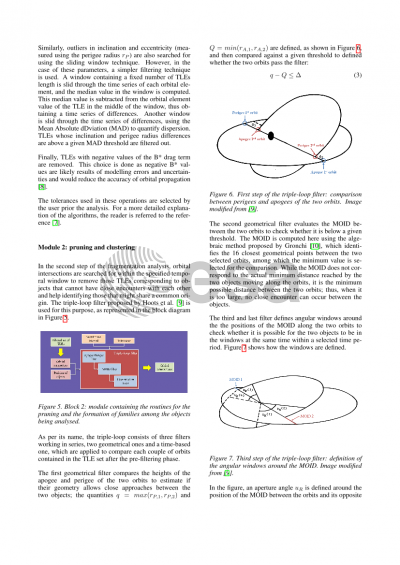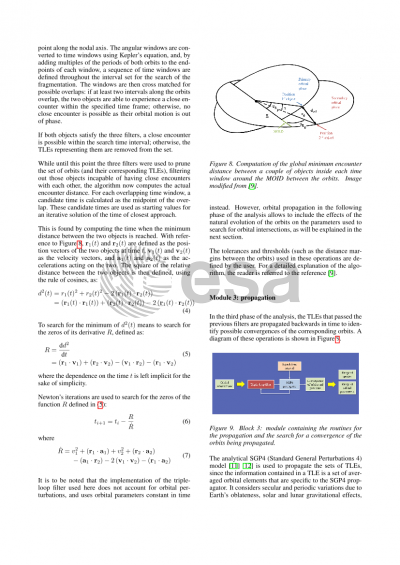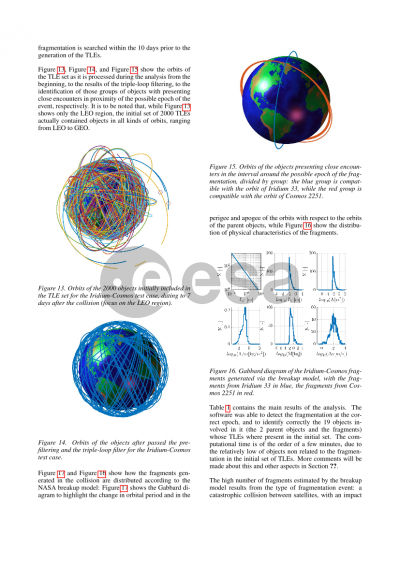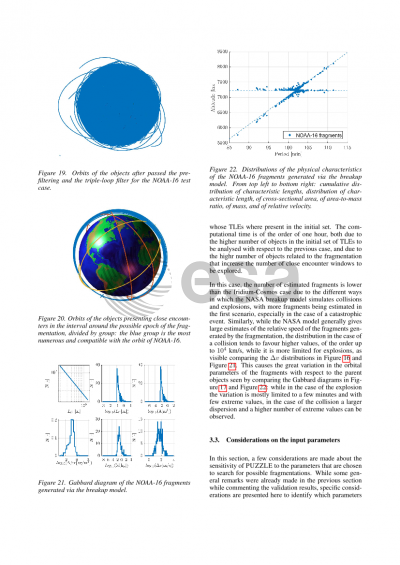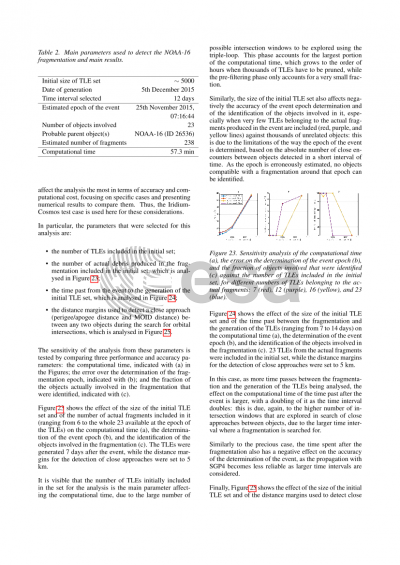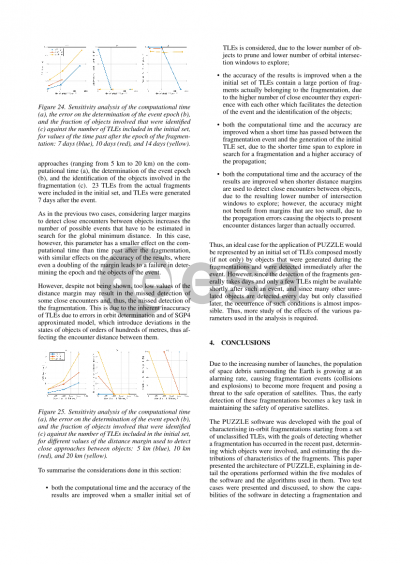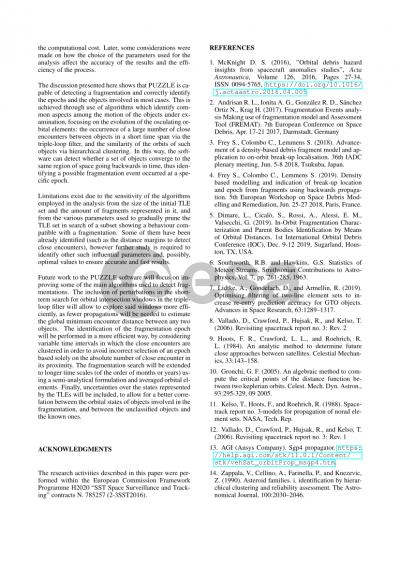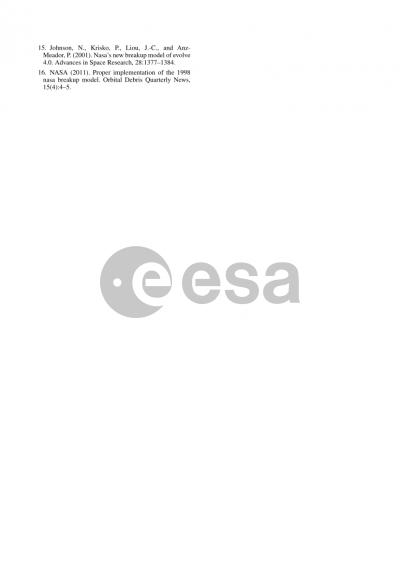Document details

Abstract
Space debris have become a persistent problem and a growing concern for operations of satellites orbiting around the Earth, with several fragmentation events occurring every year. The increasing number of launches and operative satellites leads to the production of more debris, as the probability of collisions increases as well. Being able to predict and avoid possible explosion or collisions in orbit involving operating spacecraft or known debris is key to ensure safe and continuous operations of satellites providing a service. However, not all events can be predicted (e.g. explosions of rocket bodies or dismissed satellites) or avoided (e.g. collisions between objects in orbit). Debris produced by these events must be identified as soon as possible upon their occurrence, to detect fragmentations and reduce the risk they pose for other satellites in the future in a reliable and efficient manner.
The PUZZLE software package under development at Politecnico di Milano has two main objectives: first, identifying which debris, inside a set of unidentified objects, originated via a collision or explosion; second, characterising the event in terms of mass and energy, identifying which known objects were involved, and modelling the distribution of the generated debris cloud over the space of orbital parameters and of physical characteristics (e.g. the area-to-mass ratio).
The two objectives are achieved by analysing a set of objects in the form of TLE data taken from a daily updated catalogue. These objects are then propagated backwards to analyse their evolution in time, searching for a convergence in the space of orbital elements placing their positions within a small region of space at the same moment. Pruning and clustering algorithms are employed to identify the possible ranges of orbital parameters and epochs that define the fragmentation. These are then matched with a catalogue of known objects to provide a guess of the possible operative or dismissed spacecraft involved in the explosion or collision. The fragmentation is then modelled using the available NASA standard breakup model, which provides distributions of area-to-mass ratio and relative velocity of the fragments useful to identify the orbital regions at risk of possible collisions in the future.
The tool described above is developed under a contract with the Italian Space Agency as part of a more general software for the support of SST services and the study of space debris. Its general architecture will be explained in detail with attention to the operations performed within each module. Then, the application of the software to actual fragmentation events will be shown alongside numerical results and performance data.
Preview



